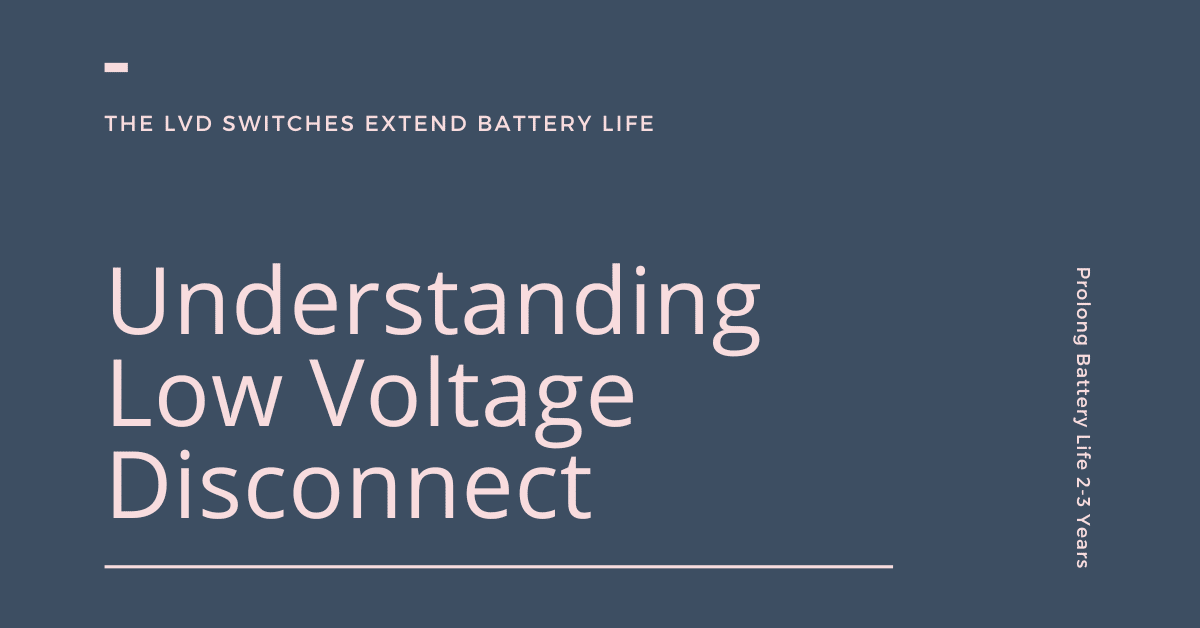Low voltage disconnects are safety mechanisms that disconnect electrical appliances from the main power source when voltage levels drop below a certain level. This helps protect your battery and your loved devices against Power failure. Low voltage disconnect switch also called LVD, they are found in most home power stations and workshops, they are particularly vital for batteries and able to extend battery life. LVD are very easy to install, and they’re often included in home battery backups. Read further to find out how low voltage disconnects work and why you should take one.
If you have any questions about low voltage disconnects, you can consult with a ZHCSolar professional electrician.
What are low voltage disconnect Switch?
A low voltage disconnect switch is a safety device that prevents battery from draining when they connect to running appliances. The Low voltage disconnects are mainly used in small electrical systems to protect batteries from being harmed by over discharge.
The essential features of a low voltage disconnect are automatic cutout and reconnect, which help identify the voltage of the battery, and trigger protection, which protects against damage to the battery. They can be found in homes, offices, factories, and other commercial sites.
Low voltage disconnects are electrical switches designed to protect the main power line from damage caused by weak battery voltage. They are popular among homeowners because they prevent household batteries from draining the battery charger on a main power supply. Besides, they help households save money by providing backup power in case of blackout.
A basic low voltage disconnect is an electrically-operated switch designed for protection of the main power line against low battery voltage. It consists of a switch and a battery (or battery bank) that contains voltage-regulator circuitry. When battery voltage reaches a certain level, the voltage regulator opens circuit to the battery’s terminal, disconnecting it from the electricity source. This prevents any damage to the battery and ensures smooth operation of the electricity supply system.

What are their purposes?
Low voltage disconnects (LVDs) are used to protect batteries and electrical equipment from overloads, over discharging or surges. In residential and commercial applications, LVDs come in different types and sizes to meet your specific needs. You can opt for a manual disconnect, which is easy to use but doesn’t provide protection against overcurrent, and you have to reconnect it yourself.
You can rely on its auto-disconnect and auto-reconnect features to control battery usage and protect the battery. Furthermore, you know that frequent over-discharging can dramatically reduce battery life and that low voltage operation can damage electrical equipment.
How to install a low voltage disconnect?
It’s easy to install a low voltage disconnect relay. Here’s what you need:
- Make sure you have a Battery (Lead Acid or AGM Battery) with Power
- Make sure the LVD Switch is Match to the Battery Size
- Connect the battery to the LVD, Only the negative terminals
- Connect the load to the LVD, Only the negative terminals
- Connect the positive terminal of the load to the positive terminal of the battery
Frequently Asked Questions
What are low voltage disconnects?
A low voltage disconnect is a safety measure used to prevent low battery voltage, which may damage the battery. It is typically installed between the Load (Appliances) and the Batteries.
What are the benefits of using low voltage disconnects?
There are many benefits to using LVD Switch, especially if you dont want a dead battery in the home.
They can protect your home and family from potential electrical injuries by cutting off electricity to dangerous areas such as wet locations, appliances with high voltage cords, or areas that may contain combustibles.
Low voltage disconnects also save you money on your electric bill by automatically turning off your unnecessary appliances when they’re not in use.
For more information on low voltage disconnects, please consult a ZHCSolar professional.
Conclusion
Don’t want a Dead Battery? Take the LVD Switch, Low voltage disconnects Switch help prevent injuries and accidents in the workplace because they allow battery working on electrical systems to safely disconnect themselves from load. They also help safeguard electrical equipment from damage caused by power surges. After the battery voltage recovered, the load to the battery connection will resume automatically, To learn more, visit our webpage on low voltage disconnects!
